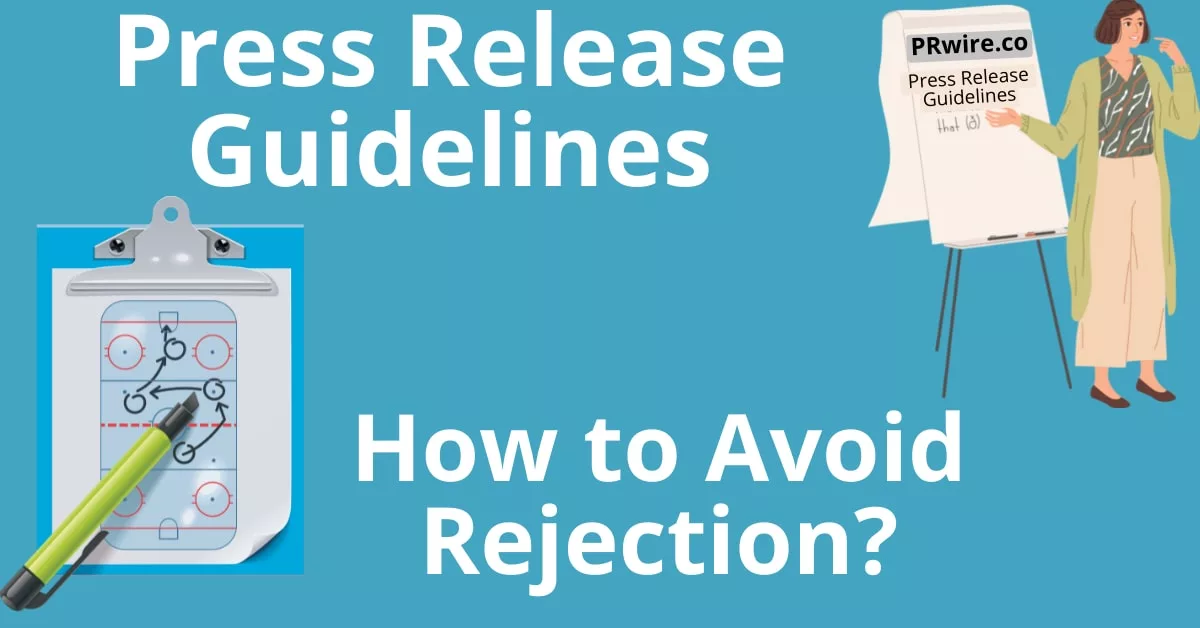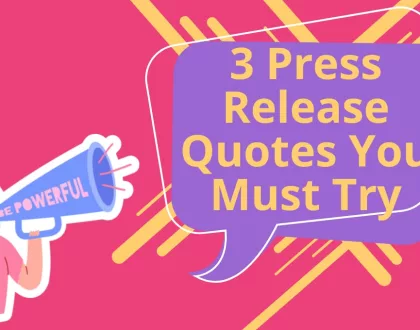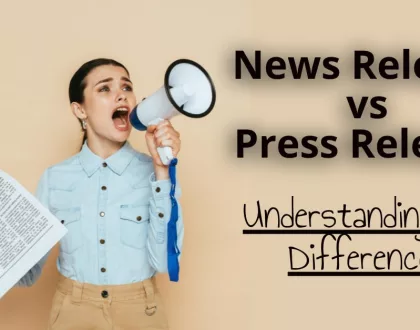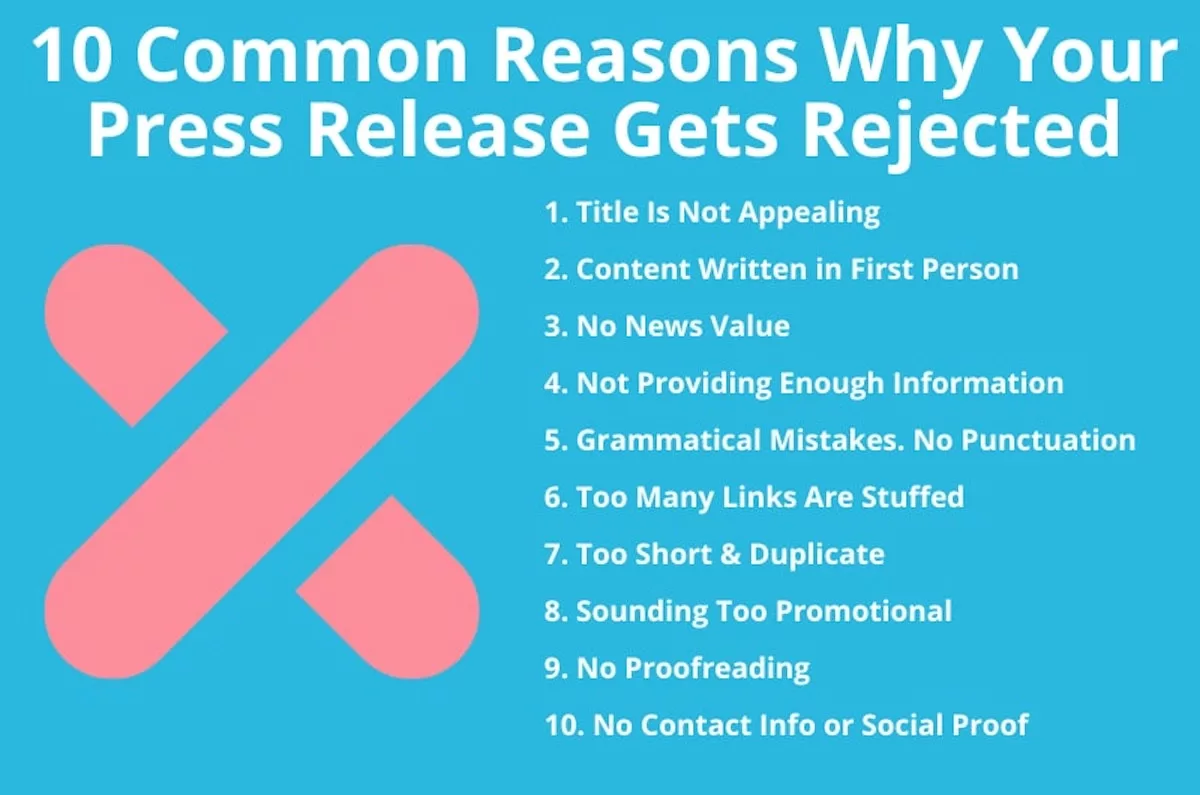Press Release Guidelines: How to Avoid Rejection?

by Avneet Singh
In today’s world of communication, where information spreads quickly, a carefully written press release is a strong way to get attention and show your message to people. A press release has the power to unveil new products, spotlight achievements, and spark conversations that ripple through the media and beyond. However, writing press releases can be tricky, as they might not always get accepted, and that can be disappointing.
In this guide, we’ll help you understand the Guidelines for Writing Press Releases and How to Avoid Rejections. Join us as we explore the dos and don’ts of press release creation that adheres to industry standards, empowering you to craft compelling narratives that grab the spotlight and avoid the disappointment of rejection. Your journey to press release success begins here.
10 Common Reasons Why Your Press Release Gets Rejected
Crafting a press release is an art that requires careful consideration and strategic planning. However, even with the best efforts, press releases can sometimes fall short of the mark and end up facing rejection. In this article, we delve into the 10 most common reasons why your press release might get rejected and provide insights on how to avoid these pitfalls.
1. Title Is Not Appealing
The title of your press release is the first thing that catches the reader’s eye. If it’s dull, generic, or fails to capture the essence of your news, chances are it won’t make the cut. Write a title like a news headline that’s attention-grabbing, concise, and reflects the most important aspect of your story.
2. Content Written in First Person
Press releases are meant to be objective and professional. Writing in the first person can make the content seem more like a personal story rather than a newsworthy announcement. Stick to the third person to maintain the appropriate tone.
3. No News Value
A press release should offer something newsworthy and relevant to your target audience. If your content lacks a unique angle, timely relevance, or broader significance, it might be rejected for not offering genuine news value.
4. Not Providing Enough Information
Leaving your audience with unanswered questions is a recipe for rejection. Ensure your press release includes the who, what, when, where, why, and how aspects of your story to provide a comprehensive understanding of the news.
5. Grammatical Mistakes & No Punctuation
A press release riddled with grammatical errors and lacking proper punctuation can come across as unprofessional and undermine your credibility. Proofread meticulously to maintain a polished appearance.
6. Too Many Links Are Stuffed
While providing context with links is beneficial, overloading your press release with excessive outbound links can make it appear spammy. Stick to relevant and necessary links that enhance the reader’s understanding.
7. Too Short & Duplicate
A press release that is too brief might not adequately convey your message, leaving editors and readers unsatisfied. Moreover, sending the same press release to multiple outlets without customization can lead to rejection. Different media platforms may have different editorial standards. Therefore Tailor your release to fit each platform’s requirements.
8. Sounding Too Promotional
A press release is not an advertisement. If your content sounds overly promotional and lacks objectivity, it might not resonate with journalists seeking genuine news stories. Focus on presenting the facts and value of your news.
9. No Proofreading
Sending out a press release laden with typos, spelling mistakes, or formatting errors reflects poorly on your professionalism. Always proofread your press release meticulously before submission.
10. No Contact Info or Social Proof
Failing to include clear contact information or evidence of social proof, such as testimonials or references, can raise doubts about the authenticity of your news. Ensure to include media contact info so that your press release is accompanied by reliable ways for the media to reach out and verify the information.
How to Avoid Press Release Rejection? – Best Practices Explained
Whether you’re announcing a new product, sharing a significant milestone, or spreading important news, ensuring that your press release is received positively is crucial. In this comprehensive guide, we’ll explore three indispensable strategies to launch perfect press release that can help you avoid press release rejection.
1. Following the Best Practices
A) Present your content concisely, and without error as much as possible.
Although we know not to judge a book by its cover, having a cleanly formatted press release will win you marks. Like any craft, writing a successful press release demands adhering to a set of established best practices. These practices are time-tested press release guidelines that ensure your communication resonates with your audience while maintaining a professional and respectful tone. Clear and concise language, proper formatting, and a professional tone are essential components of any well-crafted press release. Pay attention to the structure of your release, ensuring that the most critical information is presented at the outset and followed by supporting details. By adhering to best practices, you not only enhance readability but also create a favorable impression that boosts the chances of your press release being accepted.
B) Establish an angle and know your audience.
Keep in mind that press releases are typically distributed to news organizations, and news articles are written with a specific viewpoint. Identifying your angle and being aware of your intended audience will direct your writing, enabling you to stay on track and avoid irrelevant details. If your content is rambling and the purpose is unclear, you are not likely to get that sought-after approval.
C) Allow the five W’s to guide you.
When writing a press release, make sure you include the most relevant information using the five W’s of who, what, where, when, and why, and include this crucial information right away in the body of your text.
2. Take Help from Press Release Distribution Services
Navigating the complex network of media outlets, journalists, and platforms can be overwhelming. This is where press release distribution services come to the rescue. These services like Prwire.co have established networks and relationships that can significantly amplify the reach of your message. By leveraging their expertise, you not only increase the chances of your press release being accepted but also open doors to broader coverage and visibility. Whether you’re a small business, a startup, or a seasoned corporation, press release distribution services can help you tap into the right channels and connect with the right audience.
3. Make Sure the Content is SEO Friendly
In today’s digital era, search engine optimization (SEO) is a powerful ally. Ensuring that your press release is SEO-friendly means structuring it in a way that search engines can easily understand and rank. This translates to higher visibility in search results, which, in turn, leads to increased organic traffic and engagement. Incorporate relevant keywords that reflect the essence of your news. Clear and informative headings and subheadings not only make your press release reader-friendly but also enhance its visibility in search results. By aligning your content with SEO principles, you position your press release to be discovered by a wider online audience, reducing the likelihood of rejection and increasing the potential for engagement.
Conclusion
By now you have come to know that crafting an effective press release is both an art and a science. By following the guidelines discussed above, you equip yourself to write a perfect press release that passes approvals. Remember, a well-structured press release that adheres to best practices, leverages distribution services, and is SEO-friendly holds the power to captivate audiences and spark meaningful conversations. With careful attention to detail and a commitment to delivering valuable content, you set the stage for successful press releases that not only gain approval but also resonate with readers, ultimately achieving your communication goals.
Recommended Posts

How to Cite a Press Release? A Comprehensive Guide
April 12, 2024

3 Press Release Quotes You Must Try
March 20, 2024

News Release vs Press Release: Understanding the Differences
January 18, 2024


